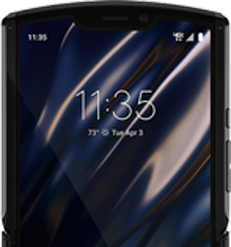WHAT TO EXPECT IN 2020


How to Prepare iPhone for Trade-In
Properly preparing your iPhone before trading it in ensures your data remains safe and the device is ready for its new owner. However, skipping essential steps can expose your personal information. Whether you're selling an old iPhone, an Apple Watch, or any other devices, make sure you take the right steps to protect your information.

Quick Steps: How to Prepare iPhone for Trade-In
Preparing your iPhone for trade-in and selling it comes down to four straightforward steps:
- Back up your data and transfer it to a new device.
- Sign out of iCloud and remove the SIM card.
- Erase all content and reset to factory settings.
- Visit a trade-in service to complete the process.
Back-Up and Transfer Your Data
Before taking any other steps, secure your important data. Use iCloud to automatically back up photos, contacts, and apps, or connect your iPhone to a computer for a local backup. This backup will be crucial when setting up your new iPhone.
Sign Out of iCloud and Remove SIM Card
To ensure your device is not linked to your Apple ID, it’s essential to sign out of iCloud. Open Settings, select your name and scroll to tap Sign Out. You will need to enter your Apple ID password to confirm. This action disconnects features like Find My iPhone and prepares the device for a new owner. Once complete, remove the SIM card from your iPhone.
Erase All Data and Reset iPhone
Next, restore your iPhone to its original factory settings. This step wipes all personal information from your device. Navigate to Settings > General > Reset and select Erase All Content and Settings. This step protects your privacy and ensures the iPhone is ready for trading.

Why Trade In Your iPhone with ecoATM?
After preparing your old iPhone, the next step is choosing the right trade-in service. ecoATM provides a fast and secure way to trade in your iPhone without the hassle of appointments or mailing. ecoATM kiosks are located in convenient public places, making getting a quick assessment and cash offer easy.
Instead of waiting in line at the Apple Store and settling for store credit, turn to ecoATM for fast cash on your schedule.
FAQs
WHAT TO EXPECT IN 2020


